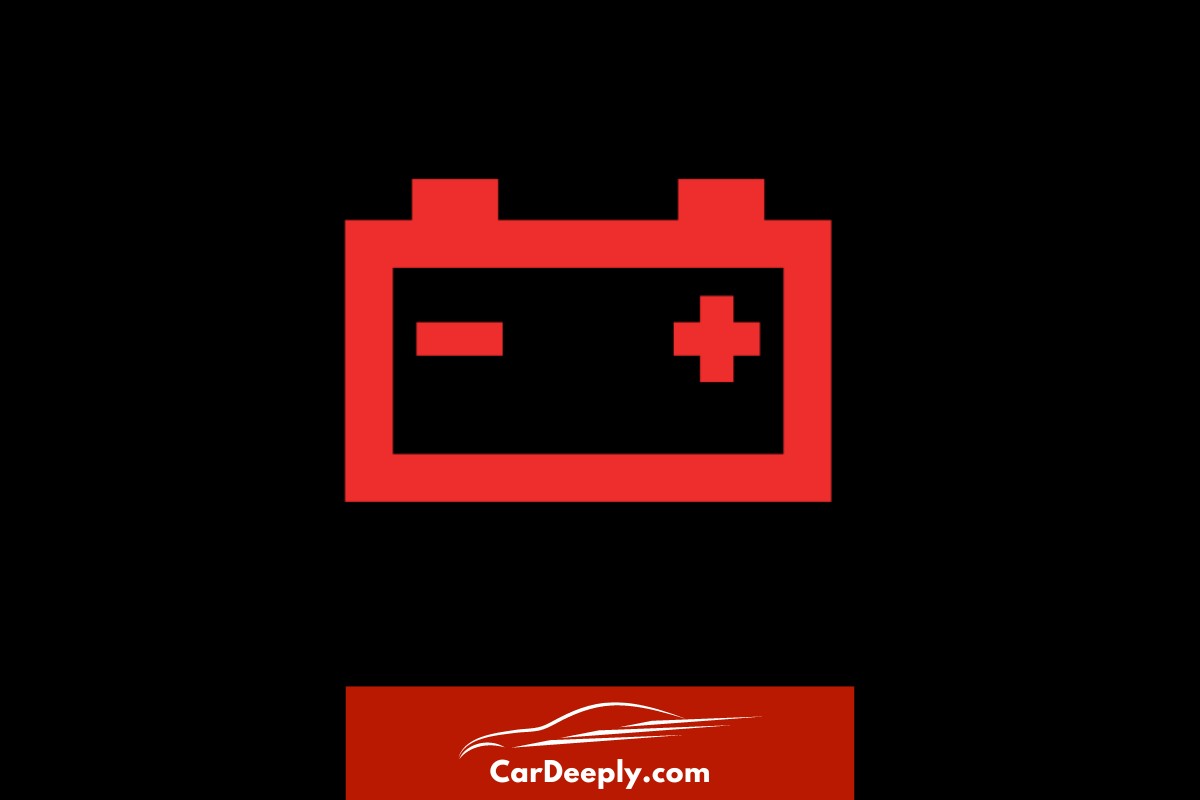It happens now and then that your car surprises you with a problem.
Right.
One of these problems can be the battery warning light on your dashboard, which indicates a low battery.
In this article, we’ll explain why this warning sign appears and provide you with practical tips and action instructions to act quickly in case of a low battery.
Advertising links are marked with *. We receive a small commission on sales, nothing changes for you.
The most important things, in a nutshell
- The battery warning light indicates possible problems with your vehicle’s battery.
- Possible causes for this warning light to come on are high power consumption in the vehicle (battery is being discharged), the age of the battery, bad weather conditions, or a malfunction of the charging system.
- When the warning sign appears, you should take IMMEDIATE action. This primarily includes reducing power consumption in the vehicle and starting/running the engine.
- To prevent battery problems, regular checks should be performed. Power consumers while stationary should be avoided at all costs.
A Brief Introduction to the Battery Warning Light on Your Dashboard

The “Battery Alert” warning sign is usually displayed as a battery icon on the vehicle’s dashboard.
It may also be accompanied by text.
The red or amber icon can be either permanently lit or flashing to alert the driver to a low battery.
Background: Why the Battery Warning Light is Really Important
To better understand why the battery warning light occurs, it’s important to know how the vehicle’s battery works.
So at this point, we’ll dive briefly into vehicle lore.
But don’t panic: We don’t want to make an engineer out of you 😉.
The battery is an essential power source for your vehicle by starting the starter and supplying power to the engine during operation.
So, a working battery is essential to operate a vehicle properly. Without power, your car won’t even start!
A weak battery can be caused by several factors, such as a long period of non-use of the vehicle (battery discharges while stationary), frequent short trips, and cold or heat.
The age of the battery also plays an important role in its functionality. The older the battery, the less reliable it is.
The technology behind the battery warning light is an indispensable warning system that alerts you as a driver to a weak battery before it is too late.
The warning system works by constantly monitoring the battery voltage during operation and immediately warning you as soon as the voltage drops below a certain level.
Have you got it all?
Then let’s look at common causes for the battery warning light to go off in the next chapter.
Reasons for the “Battery Alert” Warning Sign to Appear
Several reasons exist for the battery warning light to suddenly light up on your dashboard:
Reason 1: High-power consumer in the vehicle.
High power consumption in the vehicle, i.e., running several “power hogs” simultaneously, such as radio, air conditioning, lights, windshield wipers, rear window defroster, and other electronic devices, can quickly drain the battery.
Caution: This can lead to increased risk, especially if these devices are left on for long periods.
This means: To minimize the risk, switching on electronic devices only when you need them is important.
Reason 2: The age of the battery
Your car’s battery ages and loses its ability to store and release energy over time.
The lifespan of a car battery is between eight to ten years, which should equate to about 500 to 1,000 charge cycles.
This means checking your battery regularly and replacing it if necessary is important.
Reason 3: Bad weather conditions
Extremely hot or cold temperatures can also cause problems with your battery.
Cold slows down the chemical processes in the battery and reduces its performance, while heat discharges the battery faster.
Discharged car batteries are a common phenomenon, especially in winter. This is especially true for older models that have already exceeded their service life or are about to do so.
Reason 4: Malfunction of the charging system
Another cause of an illuminated battery warning can be a malfunction in the charging system.
If the vehicle’s charging system is not working properly, this can lead to the battery not being fully charged, which in turn leads to a low state of charge.
A charging system, in this context, means a generator (alternator) that charges your battery while driving or the engine is running.
So if the alternator is faulty, it’s only a matter of time before your battery goes down the drain, and you’re notified of this with the battery warning light.
What to do When the Battery Warning Light is Displayed
When the “Battery Alert” warning sign is said, there are a few steps you can, or even must, take immediately to keep your vehicle functioning properly and prevent potential damage to your battery.
Here are some of the most important steps:
Step 1: Immediate Action
When the warning light is displayed, you should immediately reduce power consumption such as radio, air conditioning, and lights (if possible) to reduce the load on the battery as much as possible.
Attention: Do not switch off the engine!!!
Be sure to leave the engine running to recharge the battery. The alternator may be defective, and therefore charging will not take place. However, you don’t know that at this point.
Stage 2: Check the battery
To diagnose the problem, you need to check the battery.
First, check the age of the battery. Usually, there is a sticker in a visible place that tells you.
Measure the voltage with a voltmeter to determine if the battery is charged.
Step 3: Recharge the battery
If the battery is low, you need to recharge it. This can be done in several ways.
If you have a charger, you can charge the battery yourself. However, if you are unsure or need the appropriate equipment, you should seek professional help and have your battery checked by an expert.
Tip: Some auto repair shops have mobile chargers that can help you recharge your battery.
Practical Tips and Instructions for Everyday Use
To minimize the risk of a discharged battery, in this chapter, we will give you some practical tips and instructions that you can follow in everyday life.
Let’s go!
Checking the battery regularly
It is important to check the battery regularly to ensure it is in good condition.
The best way to do this is to check the voltage and look for signs of wear or damage.
If the battery is older than 8 years, consider replacing it.
Avoiding power consumers when stationary
Avoid using “power hogs” like the radio, air conditioning, and lights when your vehicle is stationary.
These loads put unnecessary strain on the battery and can lead to a lower state of charge.
Replacing the battery when necessary
Even if it costs money: please do not hesitate to replace a battery that has reached its zenith.
Even if it is still running!
Be sure to choose a battery that is suitable for your vehicle and has the right size and capacity. Then, have the replacement done by a professional to avoid damage.
Frequently Asked Questions
Can you drive with a battery warning light on?
Yes, driving with the “Battery Alert” warning light is possible, but it should be avoided as there is a risk of sudden battery failure. Instead, it is better to fix the problem immediately to prevent damage.
How do you fix a battery charge warning light?
To fix the “Battery Alert” warning light, you need to identify the cause. First, check the battery, the charging system, and the power consumption in the vehicle.
How do you know if it’s the alternator or the battery?
If the “Battery Alert” warning sign comes on, it may indicate a problem with the battery or charging system (such as the alternator). Measuring the voltage with a voltmeter can help identify the cause. A repair shop can help with diagnosis.
Our sources
- https://www.bridgestonetire.com/learn/maintenance/how-test-replace-dead-car-battery/
- https://www.repairsmith.com/blog/car-battery-dead-heres-what-to-do/

Sebastian loves convertibles and drove a BMW 335i for a long time (325 hp is just a dream). Today, with two children, he is more concerned with SUVs and family-friendly vehicles. In addition to an Audi A4 Avant, he also drives a Cupra Formentor VZ – even as a family man, you can’t do without speed. Get to know Sebastian better and visit the About Us page.
Advertising links are marked with *. We receive a small commission on sales, nothing changes for you.
